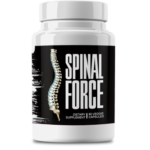This Village-Made Chinese Pain Reliever Eliminates Back And Joint Pain!
Avoid These Mistakes in Knee Cartilage Damage Treatment

Are You Making These Knee Cartilage Treatment Mistakes?
Knee cartilage damage sneaks up on you - one day you're fine, the next you're wincing with every stair climb. Whether it's from that old sports injury, years of wear and tear, or just Father Time catching up, getting the right knee cartilage treatment makes all the difference. But here's the kicker: most people unknowingly sabotage their recovery. Let's walk through the most common slip-ups and how to avoid them so you can get back to moving pain-free.
Knee Cartilage 101: What You're Dealing With
That Slippery Shock Absorber in Your Knee
Imagine your cartilage as the body's natural shock absorber - that smooth, rubbery cushion letting your bones glide without grinding. When it gets damaged (from a tear, arthritis, or just overuse), things stop moving smoothly. The tricky part? Unlike other tissues, cartilage has terrible blood supply, meaning it heals at a snail's pace.
What's Wearing Down Your Knees?
- Oops moments: That basketball pivot gone wrong or misstep on the stairs can tear cartilage instantly
- The slow fade: Osteoarthritis wears cartilage down like erasers on a pencil over years
- Repetition injury: Runners and gym rats - your squats and miles add up
- The weight factor: Every extra pound feels like four on your knees
Why Playing the Waiting Game Backfires
Here's the hard truth: cartilage damage is like a bad roommate - it won't fix itself or go away. Ignore it, and you're looking at chronic pain, wobbly joints, and possibly early arthritis. But catch it early with proper knee cartilage treatment, and you can actually slow or even stop the damage.
Mistake #1: Brushing Off Those Early Warning Signs
Your Knees Are Talking - Are You Listening?
- That nagging ache when you bend or climb stairs that won't quit
- Swelling that sticks around like an unwanted houseguest
- Creaky, crunchy sounds when you move (no, it's not just "getting old")
- Suddenly realizing you can't squat like you used to
The High Cost of "I'll Deal With It Later"
Waiting until you can't ignore the pain anymore is like ignoring a check engine light - by the time you address it, the repair bill's much higher. Early intervention with physical therapy or joint supplements can save you from bone-on-bone situations down the road.
Mistake #2: Popping Pills Like Candy
The Painkiller Trap
NSAIDs might be your temporary BFFs for pain relief, but here's the catch: they're just masking the problem while your cartilage keeps deteriorating. Long-term, you're risking stomach ulcers and kidney issues without actually fixing anything.
Smarter Ways to Ease the Ache
- The dynamic duo: Ice packs and rest after activity work wonders
- Rub-on relief: Those menthol gels create a distracting tingle that actually helps
- Joint juice: Glucosamine supplements might help - the science is still out but many swear by them
Mistake #3: Ghosting Your Physical Therapist
Why PT Isn't Just Optional
Think of physical therapy as personal training for your joints. A good PT strengthens the muscles around your knee like a natural brace, takes pressure off the cartilage, and teaches you how to move without reinjuring yourself.
The Knee-Friendly Workout Plan
- Leg lifts: Boring but brilliant for building quads gently
- Pool power: Swimming gives cardio without the pounding
- Stretch it out: Tight hamstrings pull on everything - keep them loose
Mistake #4: Jumping Into Surgery Without Asking Questions
Surgical Options Decoded
- Microfracture: Pokes tiny holes to stimulate new cartilage (for small areas)
- OATS: Healthy cartilage transplant from one area to another
- The big one: Knee replacement when damage is everywhere
Finding Your Best Path Forward
Surgery isn't one-size-fits-all. A 25-year-old soccer player needs different treatment than a 60-year-old with arthritis. Newer options like PRP injections might help delay or avoid surgery - ask your orthopedist about all your options.
Mistake #5: Eating Like a Teenager While Healing
Food as Medicine for Your Joints
Your cartilage loves omega-3s (think salmon and walnuts), vitamin C (hello, oranges and peppers), and collagen (bone broth fans swear by it). Sugar and processed foods? They're basically throwing gasoline on inflammation.
The Weight-Knee Connection
Here's motivation to shed pounds: losing just 10% of your body weight can cut knee pain in half. That's because every pound lost removes four pounds of pressure from your knees with every step.
Mistake #6: Rushing Back Like Nothing Happened
Healing Takes Time - Here's the Timeline
Recovery isn't linear:
- Physical therapy: Give it 2-3 months to really work
- Post-surgery: Might be 6 months before you're back to sports
The Smart Comeback Strategy
Start with walking and swimming before testing your knee with running or jumping. And please - if it hurts, that's your body's way of saying "Not yet, champ."
The Bottom Line
Your Knee Recovery Cheat Sheet
- Don't tough it out - early treatment prevents bigger problems
- Pain meds are bandaids, not cures
- Physical therapy is your secret weapon
- What you eat affects how you heal
Final Reality Check
Healing knee cartilage isn't a sprint - it's a marathon with occasional water breaks. Avoid these common mistakes, and you'll cross the finish line to recovery much faster. If your knees have been bothering you more than usual, do yourself a favor and get them checked out sooner rather than later.
Been through knee cartilage treatment? Drop your best tip in the comments - your experience could help someone else avoid these pitfalls!








